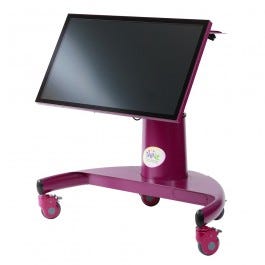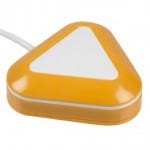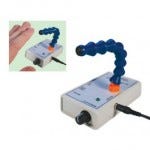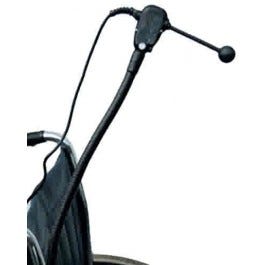

Summer Plans for Our Next Best Academic Year
By: Dr. Ray Heipp
The Beach Boys gave us an “Endless Summer” almost 40 years ago. While that might be something we could use today, we only have so many weeks for our own transition from the 2023-24 academic year to the 2024-25 academic year. We want to make sure we have some time for ourselves as well as keeping an eye toward the start of the year. What are some of those things that would be helpful to focus upon understanding the current educational environments in which we operate? How can we set ourselves up for a healthy academic year as well as from a mental health standpoint?
Let’s start with you first. The phrase that I have heard and used for most of my academic career is “You don’t understand. I don’t have time for myself.” It is always good to focus on your family or on matters that need to be addressed during the summer. Taking just 15 minutes per day along with finding some time each week to “do you” can lead to a more relaxed and refreshed feeling throughout the summer and into the upcoming school year. “Do you” can be anything you want it to be. I know some folks like to go to the beach and soak up the sun. Others might prefer to go camping or hiking to be closer to nature. Some might simply want to find a comfortable chair and a good book. Whatever your choice is, do it! Even if you are on a vacation with the family, still find that 15 minutes where you can be by yourself and recharge. By finding this time now in the summer months, you may be able to create a habit that can move with you into the school year.
As you look ahead for your students, here are some themes you might want to consider. The first is the idea of transitioning. How can you begin to look at multiple aspects of your classroom day and create opportunities for transition? One of the tools I always recommend as an important part of training the behavior of transitioning between activities is a Time Timer Visual Timer. Aside from decreasing anxiety through the use of a visual timer, one can also begin to have consistency in transitioning between activities. If you have a Time Timer sitting on a shelf somewhere, bring it down and use it every day. If you don’t have one, consider using a 5-minute timer as it gives a different visual perspective for your students. We are beginning to use their own bodies to train the behavior of a timed transition. We are also teaching them the importance of a schedule moving forward in their lives. Simply putting information on a dry-erase board as to the activities which need to be completed is good in identifying which tasks need to be done. That is like a to-do list. Adding in the visual time aspect is what creates a stronger behavior around completing that transition. Please be aware that having timers with numbers or using an actual clock can only be as effective as the individual’s cognitive ability to process time. The research supporting the use of a visual timer reducing anxiety focuses on the fact that numbers still require math and do not always alleviate feelings around needing to rush through things. A visual timer creates an understanding of the passage of time and a visual cue to understand how much time is left. I even use a visual timer when completing activities as it keeps me more focused.
The second theme focuses on sensory supports and how to use them properly. We have been trained to believe that sensory supports should only be used during escalations or periods of increased emotional response. In fact, when any individual, including those who are neuro-typical, is taught to use socially and environmentally appropriate sensory supports, they can begin to work on self-regulating behaviors which can then transition outside of the classroom. For those who do not look to put items in their mouths or to throw things, products such as a tangle toy, boinks, sensory stones, or a pencil grip can become tools that can be a go-to when feelings of stress or overwhelm begin to arise. Again, this is a strategy that can work for all individuals. I have a “worry stone” that I carry with me and a tangle toy on my office desk. Sensory supports should not be hidden away until certain times. I have even worked with some OTs and some SLPs who give sensory supports to individuals when completing therapy sessions so that those individuals can process their kinetic energy and train themselves to maintain focus on the task at hand.
Another theme is one that I preach on a regular basis. This theme is making any assistive technology inclusive and accessible to many. Again, what devices do you have sitting on shelves because the student who needed them has graduated or transitioned to another building? See how you can repurpose those devices to enhance what goes on in your classroom. I love the example of using TalkingBrix2 to become single message “direction givers” in different parts of the classroom. Now, your voice can be in multiple places at one time, and you begin to train a behavior around getting directions from auditory and visual prompts as well as getting them from a teacher, therapist, or another adult. Think about when that student might enter the workplace and have to get directions from a training video instead of a person. You have them ready to go! Other single message communicators can also be placed in different areas to give affirmations or reminders. Be creative with your AAC devices. I always share the example of using a QuickTalker with the Widgit software to create “auditory books.” Take a book like Goodnight Moon and record the pages on your QuickTalker. Use Widgit to create a grid that has a picture of the pages and record what is written on that page. Now, individuals can take the book and the QuickTalker and “read” to themselves without always needing your input. Let them begin to understand the flow of words within reading and get them to enjoy it as they learn how to do it.
Incorporate switches into your classroom as well. Something as simple as taking a battery interrupter and putting it into a light and then connecting it to a switch can help you to create an “answer button,” a “call button,” a “question button,” or any other type of button you can design as the use of that switch simply turns on the light. Now, many students can communicate that way without the need to shout out loud, raise a hand, or go unnoticed as their hand or voice might not be visible or audible.
Summer is the time where we can create the idea in our minds of how we can utilize the tools that we have to enhance our classroom environments. Dream big and let those dreams come to fruition! Don’t forget to take the time for yourself first. When you are centered and focused, it allows you to be even more focused on those around you, students and family! If you do have some questions about your specific environments, feel free to reach out to me at rheipp@schoolhealth.com and let’s see what we can come up with for you.
May you have an amazing summer and come back ready for an amazing 2024-25 Academic Year!




